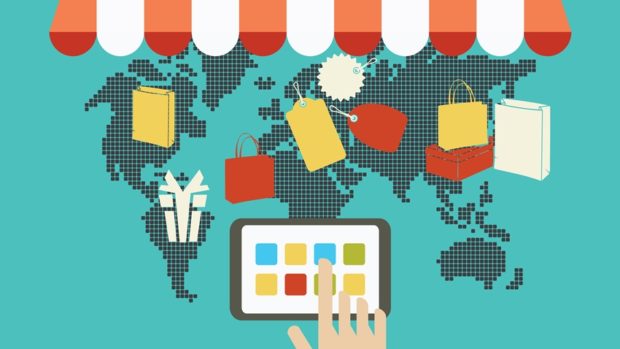
‘Metaverse’ may be one of the buzzwords of 2022 so far, but it is fair to say there are still many sceptics in the business world. It was described by Mark Zuckerberg as the “embodied internet” where users can enjoy watching movies, travelling, meeting friends and shopping via VR and AR headsets or other devices. While Elon Musk, in contrast, says he doesn’t “get it”. Whether you love or hate the idea, it is hard to ignore that we may be facing a new frontier. There are a few first movers experimenting to really understand it, but it could be the perfect moment for companies to start testing it in terms of marketing and customer experience.
Metaverse marketing
So how can brands profit from the opportunities of the metaverse today? Should we already be experimenting with ways that it can benefit our brand, customer experience and maybe even make a profit from it?
Like with any marketing endeavour, it’s important to draw up a strategy with clear objectives first, but here are a few ideas for how it might work.
1. Advertising
Using old school methods in a new environment might not be the most exciting opportunity, but it does allow brands to reach a pretty massive audience at a more affordable price than some traditional channels.
In 2021 Dimension Studio – creators of virtual worlds and humans for the metaverse – earned US $6.5 million in revenue from making metaverse technology for fashion brands alone. Coca-Cola, Samsung, and Volkswagen have invested in virtual billboards within video games like Football Manager and Hyper Scape, while Roblox also began experimenting with interactive ads. Nas also used in-game audio ads to promote his album “King’s Disease II,” and saw a 1.275 per cent click-through rate.
2. Virtual Influencers
Using influencers has perhaps already become a slightly “old school” marketing approach, but it is already crossing over into the metaverse. Daisy, for instance, is a virtual influencer created for online luxury discount site Yoox. She was featured in multi-brand campaigns, wearing clothes by Calvin Klein and Tommy Hilfiger. Other brands have a slightly different approach, using avatars modelled on real people. Dior created a digital doppelganger of the Chinese actress Angelababy to attend its show in Shanghai, while digital doubles of supermodels Naomi Campbell and Kendall Jenner starred in Burberry’s collections.
3. Advergames
With this technique games are used as a means of advertising products or services. So, the brands do not advertise in the games of other parties, but they design their very own games. Tourism New Zealand, for instance, launched PLAY NZ, a 3D world-style adventure gaming experience to let people explore the country’s greatest attractions in a completely new way. Luxury brand Balenciaga introduced video game “Afterworld: The Age of Tomorrow”, while Louis Vuitton has “Louis The Game”, a game that combines its heritage, innovation and NFT art.
4. Virtual Venues
Brands like Warner Bros., Hyundai, Adidas and Gucci are effectively claiming virtual real estate in the metaverse with their own virtual venues. DBS bank recreated Singapore’s iconic Zouk night club in Fortnite, renaming it the ‘Live Fresh Club’ to advertise its credit card of the same name. Hyundai Motors launched five theme parks on Roblox to introduce younger consumers to Hyundai’s products and future mobility solutions, while Vans launched a virtual skatepark that lets players try new tricks.
5. Virtual Events
The entertainment industry is already embracing this approach, and we’ve already seen attendance figures for virtual concerts run on Fortnite or Roblox that are much higher than in real life.
But businesses are also starting to understand the value of virtual events in their customer experience. Lindsey McInerney, Global Technology and Innovation Director at Anheuser-Busch InBev believes that “The future of sports, media, and entertainment is virtual. Almost 2.5 billion people are already participating in the virtual economy. This is the direction of the world’s evolution.”
6. Metaverse commerce
Perhaps the most interesting opportunity in marketing and CX in the metaverse sometimes called the direct-to-avatar (D2A) economy, where brands are starting to sell digital goods inside the metaverse. Of course, in-game commerce has been around for years already and is even projected to evolve to $74.4 billion by 2025. More recently, however, corporate brands such as Clinique, Tencent, Anheuser-Busch and Gucci have made moves in metaverse environments.
A big part of this is the non-fungible token (NFT) market that is turning virtual goods into unique content or collectibles using a smart contract. In the Metaverse, these NFTs enable virtual ownership of an asset. Visitors of the Gucci Garden virtual store can purchase exclusive, limited-edition avatar items, such as a digital bag on Roblox for $4,000. Coca Cola launched virtual wearable NFTs, while Samsung gave away rare avatar clothing such as jackets, helmets and shoes as NFTs.
But it’s not just about NFTs. Brands are also selling ‘regular’ virtual products in the metaverse. Balenciaga has partnered with Fortnite to design virtual outfits, accessories, and weapons that players can purchase for their avatars. The Gucci Virtual 25 – a digital pair of sneakers – can be bought for between $9 and $12 to be ‘worn’ in augmented reality or used in partnered apps like Roblox and VRChat – so maybe it is time to think if your product could be converted for the metaverse?








Share